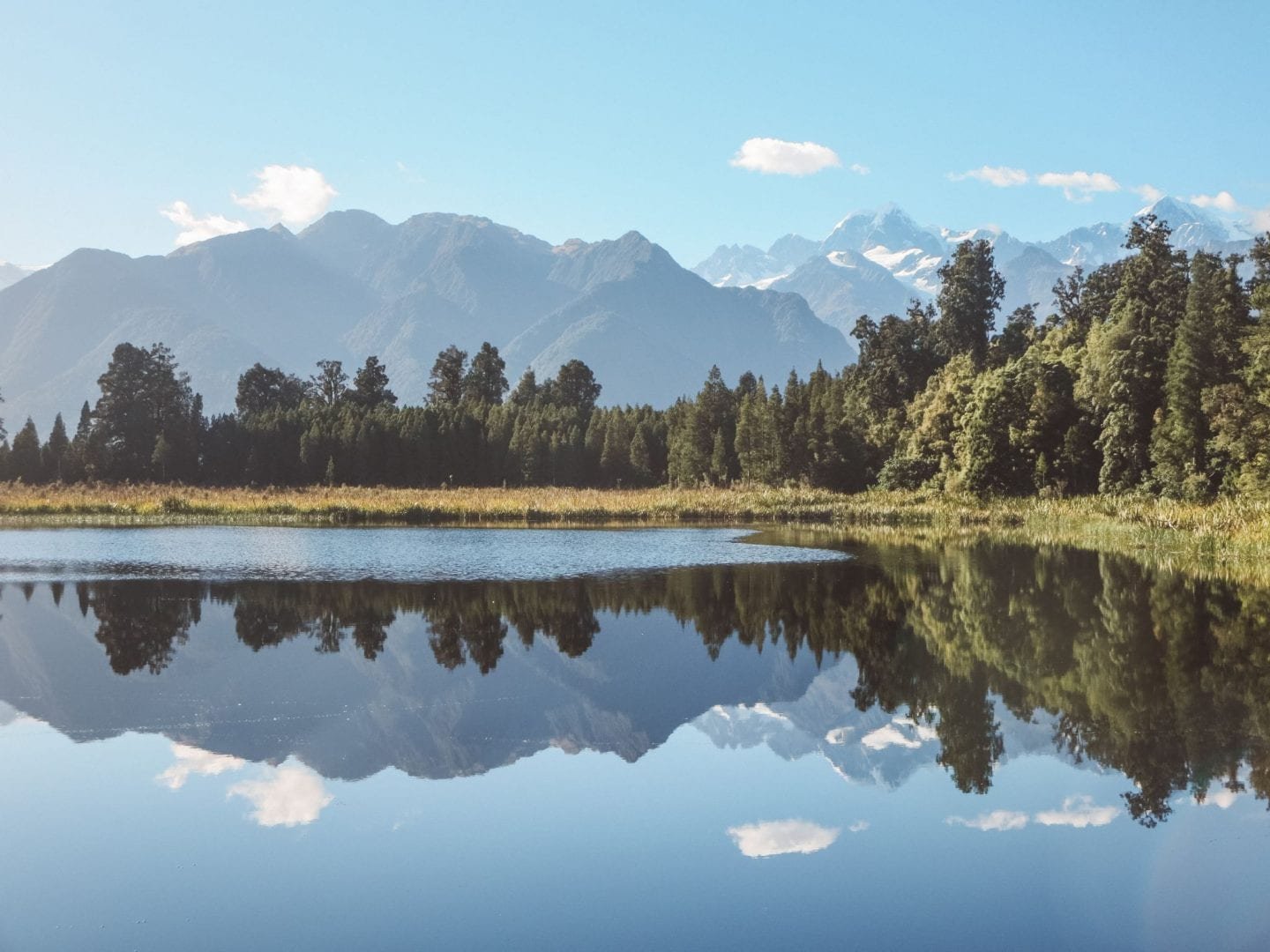
Climate changes is all the rage these days. It's trendy to care about Earth. It's cool to show up at climate strikes and to make a conscious effort in your day-to-day life to be better for the planet.
Good! Finally!
I don't care if it's a 'trend' or a 'phase' - I care that people are actually realizing how much damage has been done to Earth and are taking steps to rectify that in as many ways as they can.
While I've been doing most of the things on the list below for years, backpacking long-term puts a different spin on things and every day I'm learning and growing and adapting to new knowledge and what is available to consumers. All I recommend is doing the best you can as an individual - small things can have big impact!
This is my list of tips on how to be an eco-friendly traveller; in other words, how to look after the planet that we love to explore. It can be a challenge as a traveller to incorporate Earth-saving habits when we are without our normal surroundings (no kitchen with reusable jars to store bulk and fresh food) and constantly on the go, with the need to keep everything we're travelling with in small spaces (like a backpack!). However, I've found that small changes can be easy to switch out as long as you are conscious of your choices.
I welcome comments, tips and suggestions!
Transport
1. Carbon offsetting
Yes, I fly as a traveller. In 2019, I have flown 25 times so far! While I do try to avoid domestic flights in smaller countries, the only way to get to many places is on an airplane. A great way to offset your carbon emissions is to purchase carbon offsetting which many airline companies offer these days. TerraPass has done a good job of explaining how these work.
2. Eco-friendly activities
If you're booking tours or activities, try to choose companies that support eco-friendly and sustainable methods.
3. Pack out
My favourite activity is hiking which is not only good for your body and soul, but is rewarding by getting out there and exploring this beautiful planet without exploiting it. Remember to 'take only photographs and leave nothing but footprints' and always pack out by taking any garbage with you. I also collect any rubbish I find along the trail for proper disposal.

Hiking in Garibaldi Provincial Park, Canada
Food
1. Reusable bags
Many countries have already banned plastic bags at the grocery stores (and don't forget about all the other stores where you may be offered a bag!) which is great. I always carry a reusable bag for anything I might be picking up during my day!
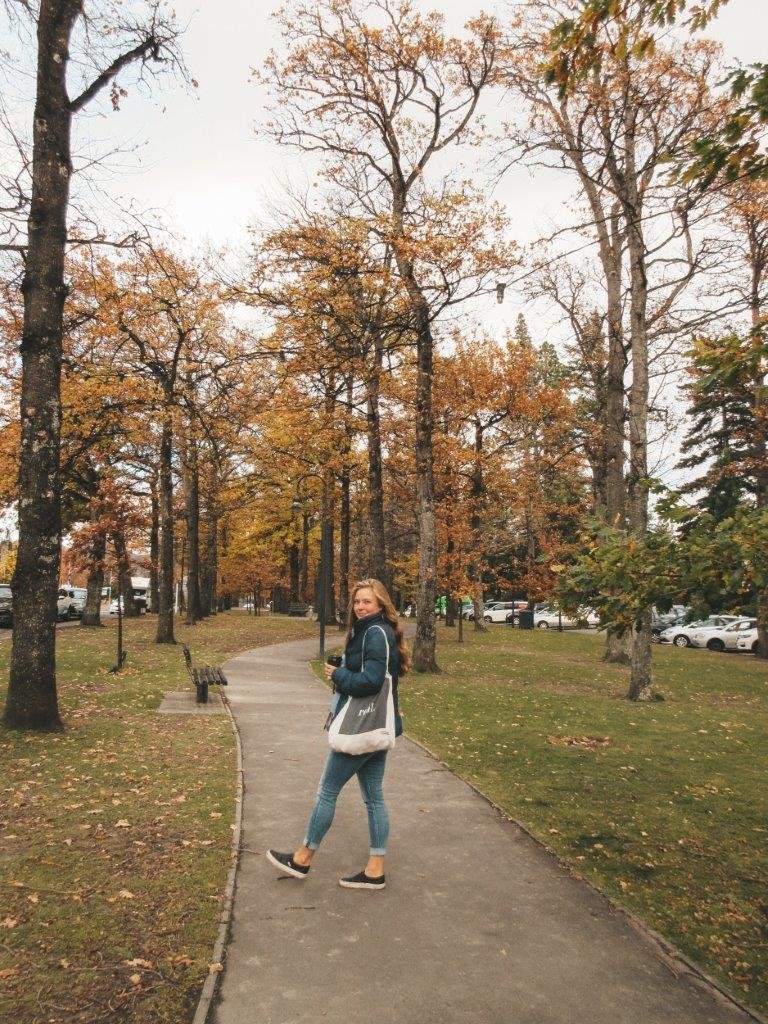
My 'real.' reusable bag in Hanmer Springs, New Zealand
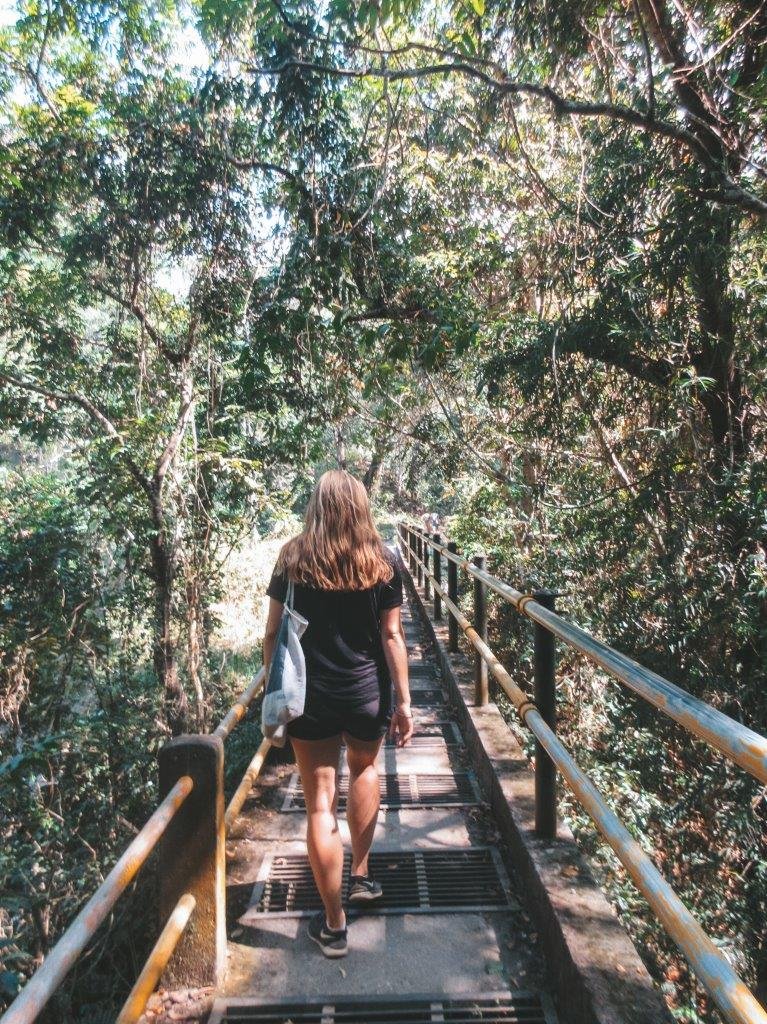
On a hike with the bag in Lombok, Indonesia
2. Straws
Ever since that viral video with the turtle that had a straw up its nose, people have realized how useless and damaging these single use items can be. Not only do you not need single-use plastic straws, you probably don't need a metal/bamboo replacement either - just put your lip on the cup!
3. Reusable containers
I carry Tupperware around everywhere I travel and it's been the best way to take out my lunch, store my leftovers or keep extra food fresh. Avoid plastic bags or single-use storage methods and wash out this one that can be used over and over again.
4. Reusable cutlery
I bring my own knife, fork and spoon everywhere I go so I don't need to use single-use cutlery when offered. Typically, you cannot bring your knife on board a plane but I haven't had issues with the fork and spoon in my hand luggage which is enough to enjoy my airplane food without having to use their plastic cutlery - that comes in a single-use plastic baggy!
5. Reusable water bottle & coffee cup
Carry a reusable water bottle to refill from the tap in safe-water countries or from certified drinking water fountains in less-water-safe countries such as Indonesia. Carry a metal or ceramic cup so you can enjoy your hot beverages on the go without needing to use a one-time coffee cup, which actually can't be recycled due to the plastic lining that keeps the outer paper from getting soggy.
6. Zero-waste groceries
So many staple groceries (pasta, rice, granola, vegetables, bread, nuts and seeds) come in single-use plastic wrap. Wherever possible, head to a bulk store and bring your own containers to stock up on your basics, thereby eliminating the need for the extra waste. While I only carry the one Tupperware, I use empty glass jars for dry goods which can be recycled as needed for space/less weight. You can even get liquids like milk at zero-waste stores, just bring a resealable bottle.

Hopper Home Eco Shop, Wellington, New Zealand

Commonsense Organics, Wellington, New Zealand
7. Don't bother with the packaging (or use paper if you need to)
Buy fruit and veg without packaging as you'll be washing them before you consume anyway. Avoid bread wrapped in plastic-wrap and reach for a paper bag to store fresh bakery bread, instead.
8. Loose-leaf tea
Think about common types of teabags - there may be strings, staples, paper labels, individual plastic packs for each teabag... Cut all this extra waste and opt for loose-leaf tea with a metal strainer.
9. Recycle the rest
When you're travelling, some convenience foods simply must be purchased in a package - things like canned soup, tubs of yogurt, jars or bottles of sauce. Make sure they can be recycled before you purchase them and when you're finished with them, thoroughly clean them and recycle them at the appropriate place.
10. Eat less (or no) meat
It's proven that eating less or no meat is great for the planet. I've been vegetarian off and mostly-on since 2012. It's cheaper on the wallet and better for the Earth. If it's something you love, I'm not saying you need to completely cut it out, but try a few days a week without meat! There are plenty of yummy alternatives like tofu, tempeh and 'beyond meat'.
11. Pick good products
Choose produce that has a lesser impact on the environment than alternatives - for example, oat milk uses less land and water and produces fewer emissions than cow's milk; plus it tastes delicious! Also try to avoid products made with palm oil such as Nutella, certain chocolates, lots of processed food, etc. Go for simple ingredient lists with things you can actually pronounce and wherever possible cook from scratch.
12. Beeswax wraps
Instead of tin foil or clingfilm, I have 3 beeswax wraps in different sizes that can be used up to 365 times and just need a rinse in cold water between uses. Brilliant!
Toiletries
1. Biodegradable products
Your plastic toothbrush and your plastic cotton swabs are going to end up in a garbage patch somewhere on land or in the ocean and they're never going to break down. These hard plastics are terrible for the environment. Make a switch to a bamboo alternative that can be composted.
2. Reusable cotton pads
Instead of buying plastic-wrapped single-use cotton pads for your makeup or toner or micellar water, get yourself a reusable and washable cotton pad that you can rinse off after using and use again and again.
3. Toothpaste
Your standard toothpaste tubes are another one of those things that'll never break down. Consider switching to toothpaste tablets which can be stored in a reusable container. Simply chew one each time you need paste to brush your teeth with! Alternatively, you can make your own with baking soda, coconut oil and some peppermint essential oil!
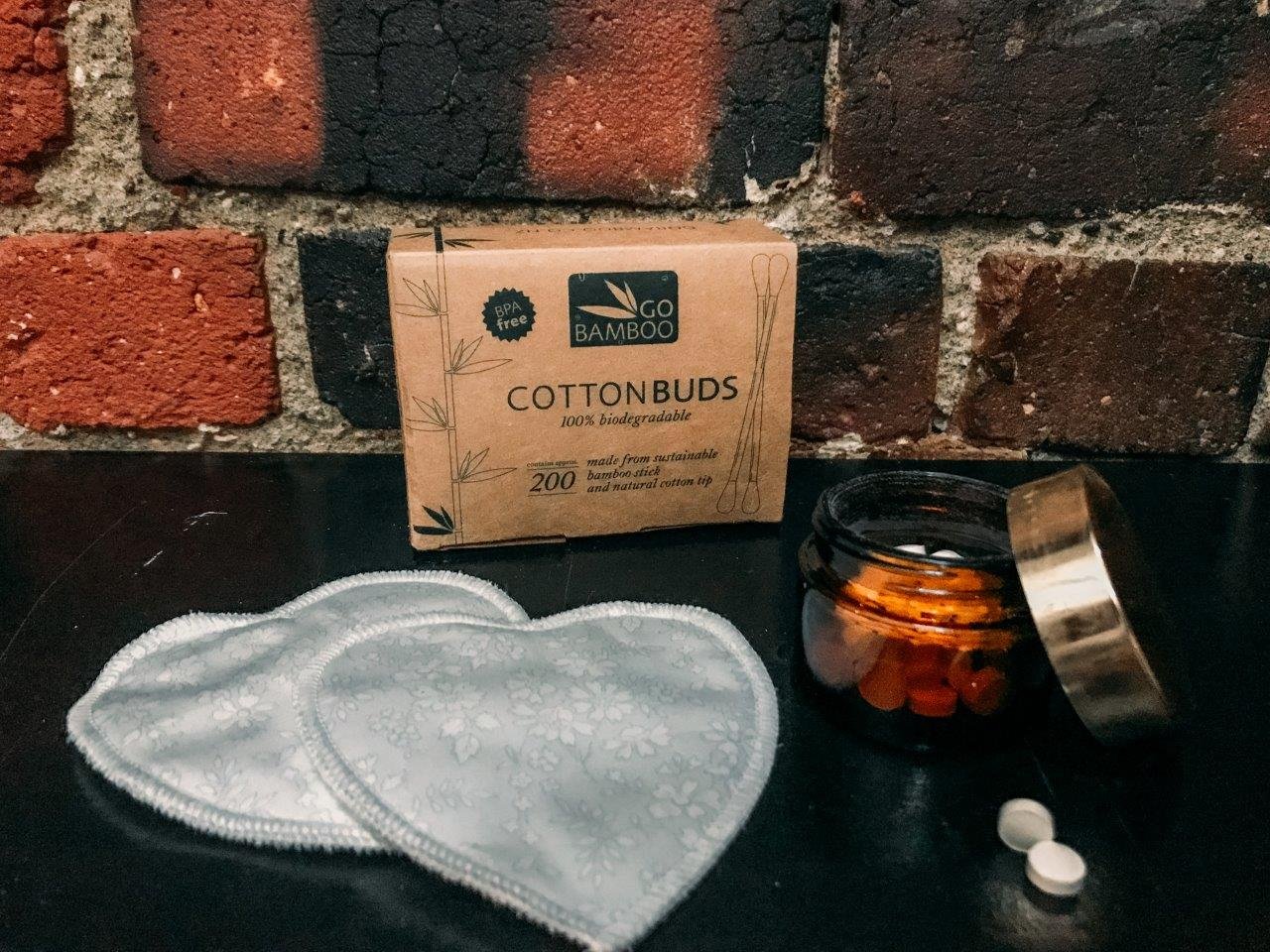
Reusable cotton pads, biodegradable cotton buds, toothpaste caps
4. Tampons
I buy tampons that don't come with unnecessary extra packaging and applicators. Just the tampon 🙂
5. Shampoo and bodywash
Every time you're done with your shower products, you toss another empty plastic container. Either refill your shampoo and bodywash containers at the zero waste store OR pick up zero waste bars that require no packaging at all! I've also started making my own liquid ones!
6. Safety razor
Recyclable stainless steel blades with a razor body that'll last a lifetime? I think yes! Choose this option instead of plastic razors that get tossed after a couple of uses.
7. Composting your bathroom goods
This might be a weird one, but your tissues, hair and nail clippings can all be composted.
8. Recycled toilet paper
You may not be buying a lot of toilet paper while you're travelling, but try to opt for recycled brands in recyclable paper packaging instead of the plastic-wrapped kind when you do.
9. Environmentally friendly products
Especially while travelling and enjoying some of the world's most beautiful places, please be conscious of the products you're wearing in the ocean. Avoid harsh chemicals, consider alternatives to products tested on animals and ensure what you're wearing won't damage your surroundings. Here's a list of eco-friendly sunscreens.
10. Toilet-bowl cleaner
Now, this isn't something you'll really be doing as a traveller, but I did learn that you can mix baking soda with white vinegar (and a drop of oil such as tea-tree or lavender for a pleasant scent) to do a great job of cleaning your toilet bowl. Buy these ingredients in bulk at a zero-waste store and you'll never need to buy a plastic bottle of toilet-bowl cleaner again!
11. Make your own deodorant
Avoid chucking those complex plastic deodorant sticks and make your own instead. I follow this recipe.
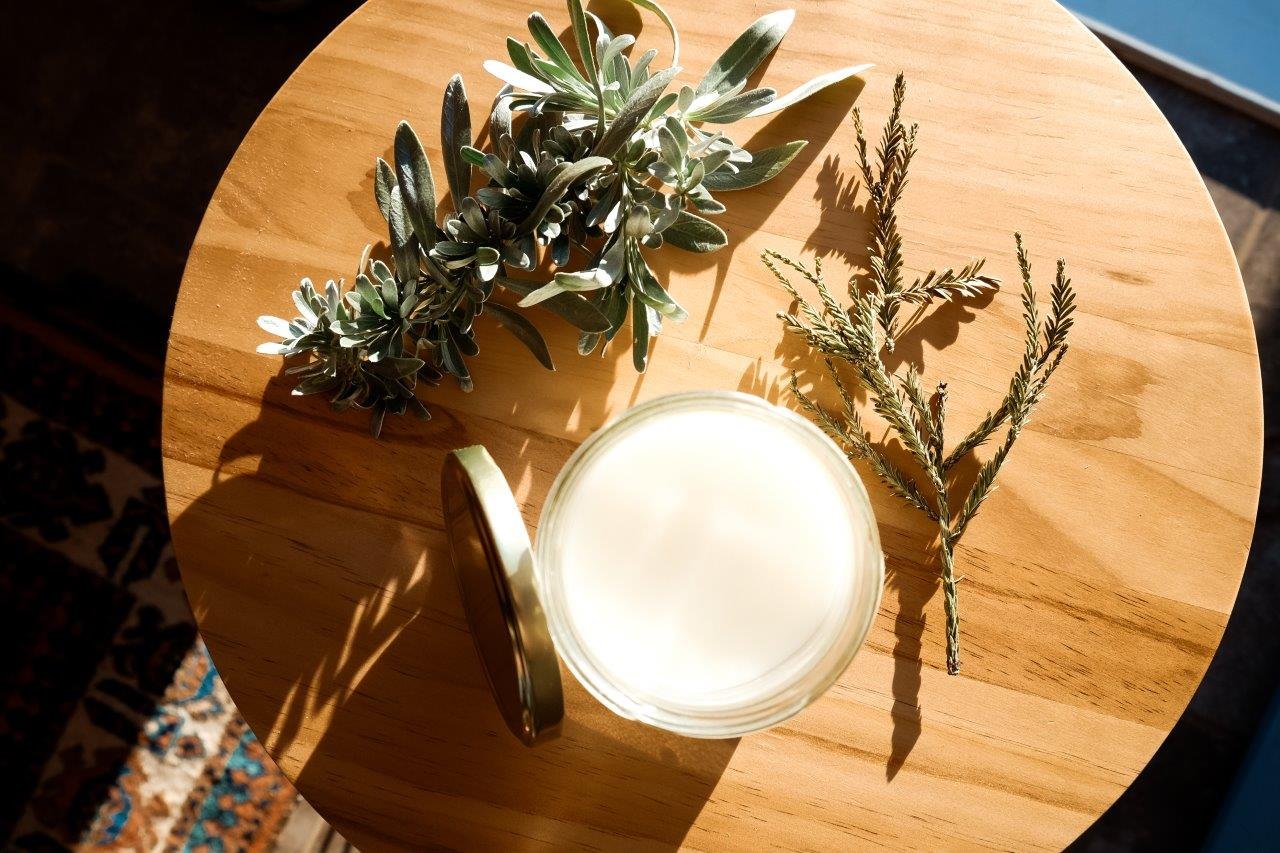
4 ingredient deodorant!
12. Make your own shaving cream
Instead of using shaving cream that comes in an aerosol can (terrible for the environment), try making your own!
Clothes
1. Bulk eco laundry detergent
Similar to bulk food, you can purchase bulk laundry detergent at zero-waste stores and store it in a reusable container. Avoid getting packages that can't be recycled (usually because they have a plastic liner on the inside) and get one that doesn't have a plastic scooper inside. Make sure you get cold water detergent so you can wash in cold water!
2. Op shops / secondhand shops / thrift stores / charity shops
95% of my clothes purchased while traveling (whether to replace worn out older ones or to better suit the weather or a work environment) have come from op shops or second-hand stores. Give clothes and shoes a new life by loving pre-worn items. I've picked up fabulous jackets, shoes and sweaters for a fraction of their original cost in excellent condition. In turn, whatever you no longer find need or space for can be donated back to these op shops to continue the cycle.
My only exceptions to this rule are jeans and dress pants because sizes can be frustrating to find and socks and underwear... for obvious reasons.
3. Repair
Things are bound to get worn out while you're travelling - before you dispose of and replace your items, have a go at repairing them or bring them to a repair shop to be fixed! You can get a whole new life out of a new pair of soles or a patched-up hole.
4. Bamboo clothes pegs
I haven't used a dryer in goodness knows how long. Instead, I hang all my clothes to air dry. Choose bamboo or stainless steel pegs instead of cheap plastic ones that break easily and can't be recycled.
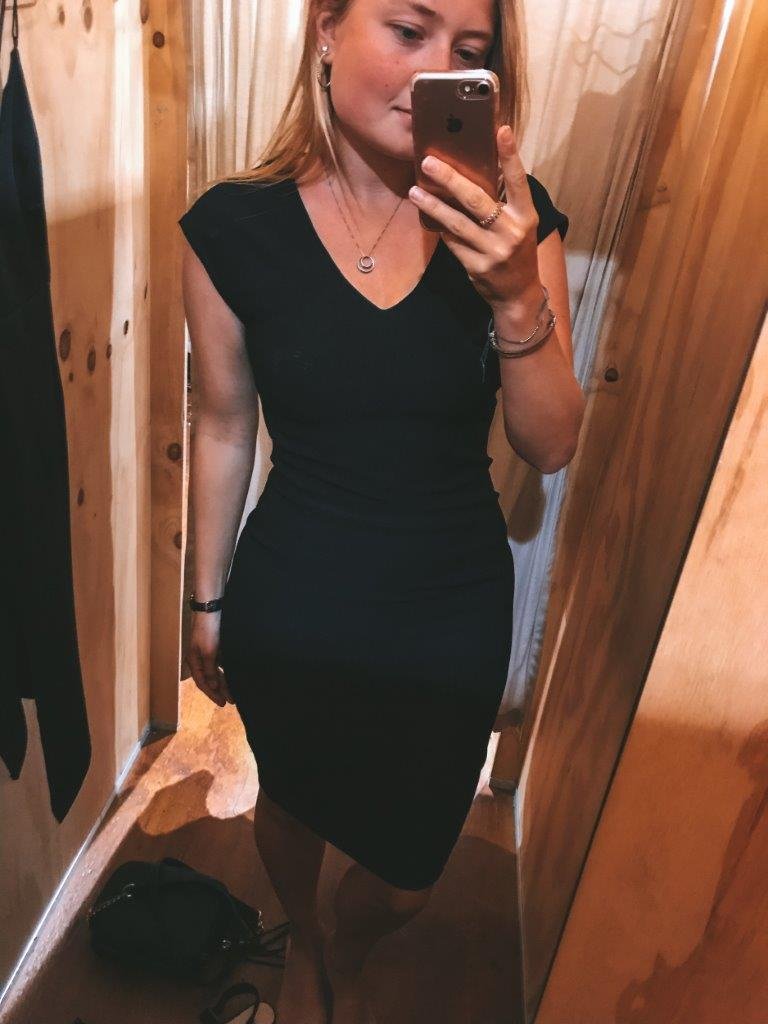
Brand new dress originally $80 bought for $35 at Recycle Boutique, Wellington, New Zealand

Zara blazer originally $139, bought for $20 at Paper Bag Princess, Wellington, New Zealand
Hi! I’m Jana, a Dutch-German-British-Canadian with a dream of seeing every country in the world. I am a storyteller, photographer and adventurer passionate about documenting and sharing my travels.

It’s sometimes difficult to know or even think about things such as using ‘reef-safe’ sunscreen! But yes, it is such a problem in our oceans. My pet hate is seeing people slather on the sunscreen without letting it absorb into their skin, then jumping straight into the water where it just slides off! Letting it absorb (and of course, using an eco-friendly sunscreen) is much better for our skin, the marine life, and the coral!
Thank you for all of your great suggestions!
Author
Right! The more research I do, the more I discover. Thanks for stopping by and sharing – it’s so important to remember to let the sunscreen absorb!!